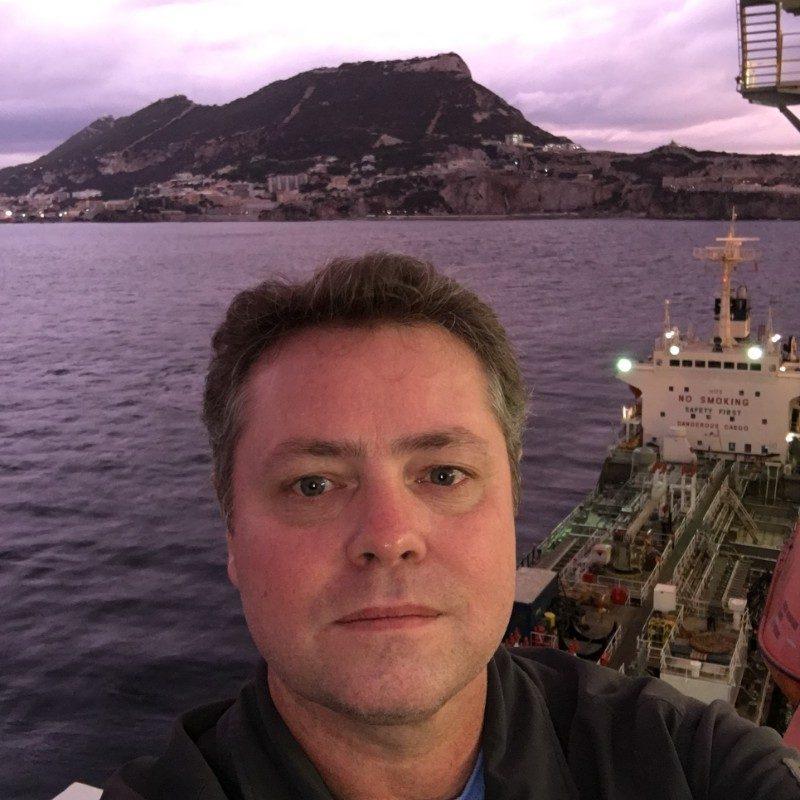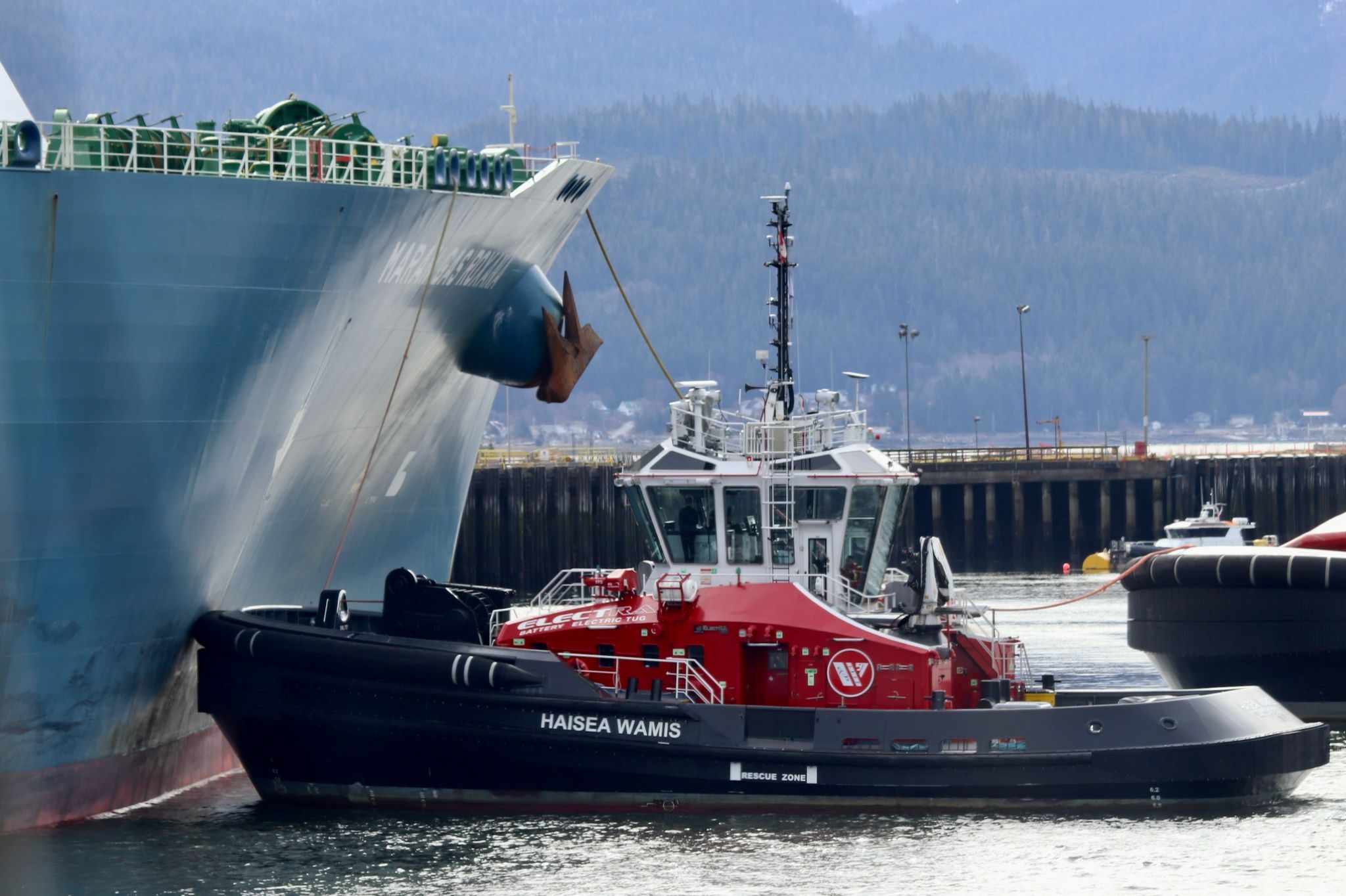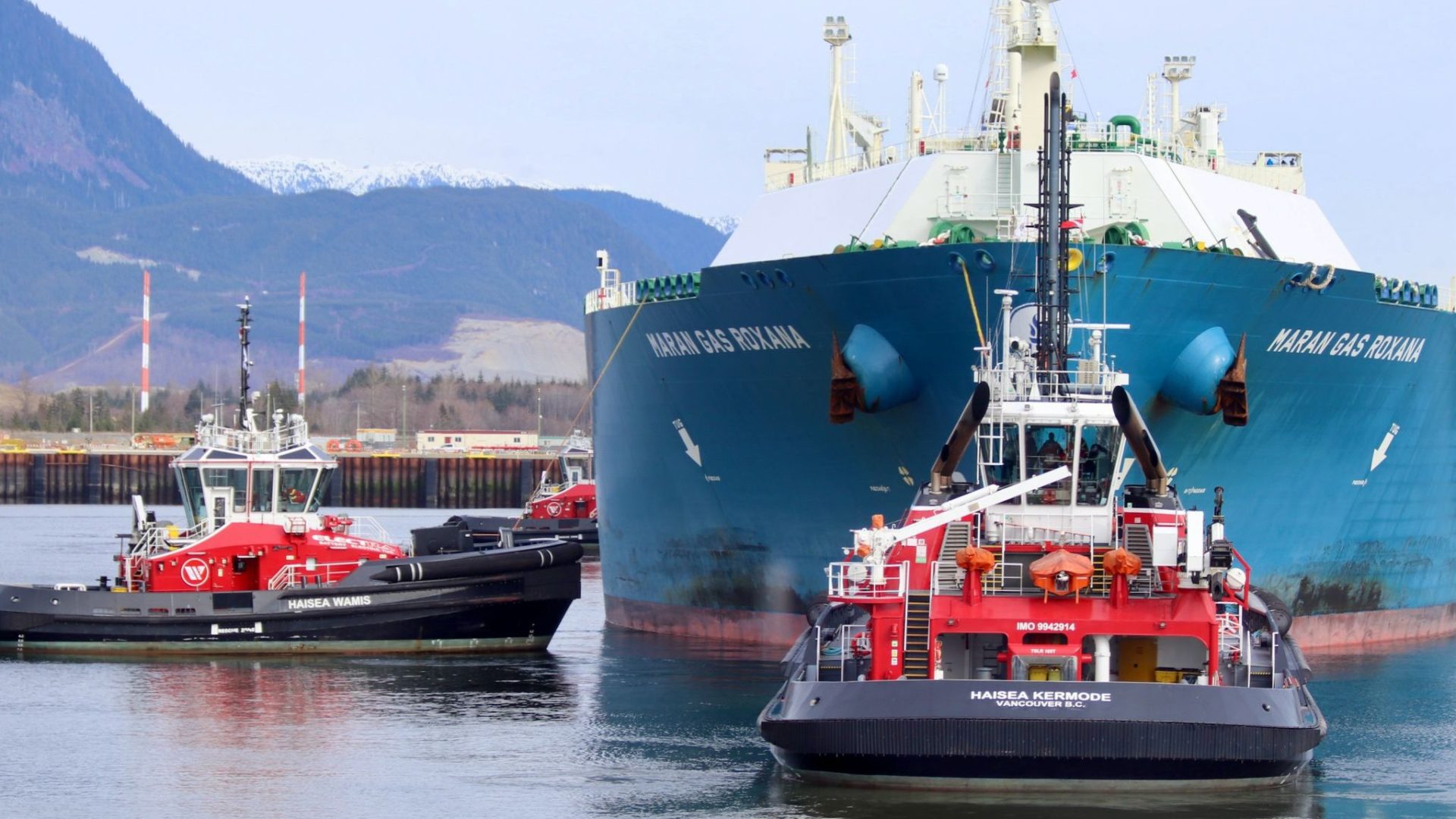Sinbad may have sailed the seven seas, but he never saw as much of the briny deep as Shawn Jones.
Jones, who has spent almost three decades working on ships around the world, had both of his feet firmly planted ashore on an early April afternoon as HaiSea Marine tugboats escorted the first LNG carrier into its berth at LNG Canada’s marine terminal jetty in Kitimat, B.C.
The vessel safely arrived in the traditional territory of the Haisla Nation carrying a cargo of liquefied natural gas that was offloaded into the facility for equipment testing in advance of the terminal’s first LNG export cargoes.
It was a historic moment even for the experienced seafarer, who now serves as HaiSea’s senior operations manager.

“Our crews have been training and preparing for this moment for a very long time. Everyone, from the tug crews to the shore team came together and it went seamlessly,” said Jones, who holds the highest grade of seafarer qualification as a master mariner.
“This import cargo was a trial run, as soon many of these LNG carriers will come through the channel and sail off to markets around the world.”
Spanning the length of about two and a half football fields, the first LNG carrier, called Gaslog Glasgow, is targeted to arrive on June 29, according to Reuters news.
Shipments will gradually increase to 180 vessels a year coming through the channel. And all of them will be guided by HaiSea tugboats.
“We have two escort tugs to guide them through the channel and then three harbour tugs working with shore teams to help dock and undock them,” said Jones.
“There’s not a lot of large commercial traffic. We see private boaters and fishermen along with supply vessels, but nothing as big as these LNG carriers. That’s why we spent a year training for this.”
HaiSea is a joint venture between Vancouver-based Seaspan Marine and the Haisla Nation, whose traditional lands oversee the Douglas Channel.
Bearing Haisla names, the company’s five tugboats reflect the blend of tradition and state-of-the-art technology.
“The three electric harbour tugs are able to run completely on battery power while the two escort tugs have the ability to run on LNG or diesel,” said Jones, who moved to Kitimat last year from South Korea, where he commissioned oil and gas ships at the Hanwha Ocean shipyard.
“I graduated from a maritime academy back in 1995 and I would have never believed I would see the day when boats ran on batteries or LNG.”

The California native, whose career has taken him into the waters of the Gulf of Mexico, the Mediterranean and off the coast of Africa, has developed a deep respect for the Haisla Nation’s seafaring ability.
“About 20 per cent of HaiSea’s workforce is Indigenous and the majority of those employees are members of the Haisla Nation,” said Jones.
“Being on the water is in their DNA. They are a seafaring nation because they have grown up next to the water so they’ve spent time fishing and boating. There are skills they have to learn but they want to learn and progress and we will help them with that. We are working with BCIT [the British Columbia Institute of Technology] to get training courses locally.”
And with construction now underway on the Haisla Nation’s own Cedar LNG project, Jones expects more opportunities for community members, both onshore and in the open water.
“Our plan is to keep the positive momentum going and focus on additional training to prepare for the first LNG export cargo, which will be history in the making for Canada, LNG Canada and HaiSea Marine.”
The unaltered reproduction of this content is free of charge with attribution to the Canadian Energy Centre.
